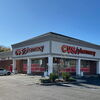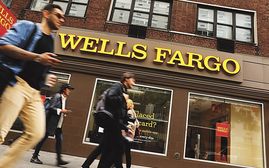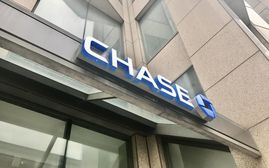
Processing Your Payment
Please do not leave this page until complete. This can take a few moments.
- News
-
Editions
View Digital Editions
Biweekly Issues
- May 13, 2024
- April 29, 2024
- April 15, 2024
- April 1, 2024
- March 18, 2024
- March 4, 2024
- February 19, 2024
- February 5, 2024
- January 22, 2024
- + More
Special Editions
- Lists
- Viewpoints
- HBJ Events
- Business Calendar
- Custom Content
As big banks close brick-and-mortar locations, Chase boosts overall CT footprint
 PHOTO | CONTRIBUTED
Chase Bank over the next year is slated to open three Greater Hartford branches in Farmington, Wethersfield and Glastonbury.
PHOTO | CONTRIBUTED
Chase Bank over the next year is slated to open three Greater Hartford branches in Farmington, Wethersfield and Glastonbury.
Bank branches have been closing at a quicker pace in recent years and the COVID-19 pandemic may only accelerate the trend as in-person transactions decline in favor of digital banking and lenders try to stay as profitable as possible.
Despite the shift, the reality is virtually no bank — even the big ones with cutting-edge digital banking technologies — is likely to eliminate its brick-and-mortar footprint, at least anytime soon.
That’s true for community and mutual banks, which rely more heavily on branches for generating business, but it’s also the case for big banks, which drive a significant portion of branch closing activity due to their sheer scale and more advanced customer-facing technology.
However, not all money-center banks are approaching their branch strategies the same, and much of the difference has to do with their respective market concentration, franchise history and other factors, experts say.
Whereas the largest banks have almost exclusively been closing branches in Connecticut in recent years while leaving their remaining footprint static, one big bank — JPMorgan Chase — sticks out for how it’s both closing branches and opening new ones at the same time.
With nearly $4 trillion in total assets, the investment bank and financial services company, operator of retail banking brand Chase Bank, is the only national bank that has opened more branches in Connecticut than it has closed between Jan. 2017 and June 2021, according to federal data analyzed by the Hartford Business Journal.
On net, Chase added two new Connecticut branches over that time by closing four and opening six. It may seem marginal, but it stands out among large competitors, most of which have simply been shuttering brick-and-mortar locations.
Four of Chase’s largest national competitors closed more than 10% of their Connecticut branches between 2017 and 2020, according to Federal Deposit Insurance Corp. data.

Chase has a longtime presence in Connecticut, but it’s been historically concentrated in New Haven and Fairfield counties. Chase entered Hartford County in 2019 and now has five branches in the region, with another three approved by its federal regulator and slated to open this year and next, in Farmington, Wethersfield and Glastonbury.
John McGinley, JPMorgan Chase’s head of retail real estate, said the bank is still filling out its Connecticut and U.S. footprints.
As of 2017, Chase had a physical presence in just under half of U.S. states. As of this summer, it expects to be in all of the lower 48.
McGinley, who is a Connecticut native, said there are a variety of factors that go into Chase’s decision making about branches. Customer traffic and preferences are paramount.
“We’re like any other retailer, we need people to come see us,” McGinley said. “If customers aren’t coming actively, you start to think about whether it’s convenient for them. We go based on where we see the customer behavior.”
It’s a complicated analysis, with both qualitative and quantitative factors.

Demographic changes, movements of personal wealth, presence of existing business banking or credit card customers all play into the equation.
Colleges are also a key factor. Many students develop their first banking relationships while working toward their degree, so if the bank finds that a significant portion of graduates from a particular college are moving to a specific area after graduation, Chase will aim to follow them.
“You’ve got to know your geography a bit,” McGinley said.
Many community banks make branch moves when they perceive a dearth of a strong local bank in a particular market. One key example is People’s United Bank’s acquisition of Farmington Bank several years ago, which has led smaller banks to open new branches and expand in that market.
Chase announced in the summer of 2019 that it would open its first downtown Hartford branch. A month later, People’s United disclosed it would acquire Hartford-based United Bank.
McGinley downplays the significance, though he says Chase certainly pays attention to competitors.
“Sure, anytime the competition gets disrupted a little bit, that’s a good component for us,” he said. “We pay attention to what our competitors are doing, but we would have wanted to be [in Hartford] whether United Bank stayed or not.”
McGinley couldn’t say exactly how many branches Chase might open or close in the coming years. The target isn’t static.
“It’ll sound a little trite, but we’re never happy with a number,” he said. “I think we know where we want to go to get a foothold. We never say ‘let’s go build 10 in Hartford’ and then set it and forget it. We build in a market, we see what that market is doing and we know where our customers are coming from.”
Differing strategies
Nathan Stovall, a principal analyst at S&P Global Market Intelligence, said Chase’s relative level of branch churn in Connecticut mirrors its activity nationally.
In May for example, Chase had 14 U.S. branch openings, more than almost any other bank in the country, alongside its nine closings, according to S&P Global Market Intelligence.
Part of the reason for its relatively high level of activity in Connecticut is that Chase, which was the sixth largest bank operating in Connecticut by account deposits as of 2020, is still playing catch-up to other major banks like Bank of America, Wells Fargo and TD Bank.
While Chase is the largest U.S. bank today by assets, much of its growth has taken place since the turn of the century, when JPMorgan merged with Chase Manhattan Bank (which brought the brand into Connecticut), and later with One Bank and Washington Mutual.
The 2005 One Bank deal ushered in CEO Jamie Dimon and the launch of Chase’s retail expansion, Stovall said.
“They started to selectively open in large metro markets … and they have pretty much continued that strategy of wanting to be in every big market in the country,” he said.
While Chase is massive, its branch-to-deposit ratio is much lower than many large competitors, Stovall said. Chase has found ways to be efficient with its real estate and the returns it produces using that footprint.
Part of the value big banks see in those physical branches goes beyond simple deposit accumulation.
“It’s really about marketing and branding, we know that’s how many banks think about branches today,” he said.
Michael Goman, of East Hartford real estate advisory firm Goman + York, helps banks find branch locations and said he too has observed different approaches between large and small institutions.

Smaller banks tend to be willing to be near a big bank so they can differentiate their local nature, but they might avoid entering a new market where there is a strong local player already present.
“They are more likely to ask if the market is overbanked or underbanked,” Goman said.
Big banks also don’t mind having a branch near smaller competitors, but they tend to want to be near other big players too, Goman added.
“It’s interesting, if there are other big banks nearby they feel like ‘gee we should be there,’ ” he said.
Market leader
With more than $40 billion in Connecticut deposits, Bank of America claimed 25% market share in the state as of June 2020, by far the most dominant player.
The bank has actually increased its local market share lead over the past three years, despite shuttering 21 branches, or 16% of its total Connecticut footprint during that time period. (By comparison, Chase has 4.4% Connecticut deposit market share, flat from 2017).
BofA hasn’t opened a new Connecticut branch since 2014.
Danielle Cassidy, Connecticut region consumer banking executive at BofA, said the bank’s footprint isn’t set in stone. In fact, she said she recently had been on a call about the potential to open a few new Connecticut locations.

“Well before the onset of the global pandemic, we were already implementing plans to optimize our business, in particular our financial center network,” Cassidy said.
Joseph Gianni, BofA’s Greater Hartford market president, called his bank’s branch footprint “reliable,” noting that besides leading market share, BofA still has about twice Chase’s branch presence in Hartford alone and many more times that in the surrounding county.
“We’re fortunate enough to have a wonderful network of centers around the state,” he said.
Related Content

2022 Giving Guide
This special edition informs and connects businesses with nonprofit organizations that are aligned with what they care about. Each nonprofit profile provides a crisp snapshot of the organization’s mission, goals, area of service, giving and volunteer opportunities and board leadership.
Learn more
Subscribe
Hartford Business Journal provides the top coverage of news, trends, data, politics and personalities of the area’s business community. Get the news and information you need from the award-winning writers at HBJ. Don’t miss out - subscribe today.
Subscribe
2024 Book of Lists
Delivering Vital Marketplace Content and Context to Senior Decision Makers Throughout Greater Hartford and the State ... All Year Long!
Read Here-
2022 Giving Guide
This special edition informs and connects businesses with nonprofit organizations that are aligned with what they care about. Each nonprofit profile provides a crisp snapshot of the organization’s mission, goals, area of service, giving and volunteer opportunities and board leadership.
-
Subscribe
Hartford Business Journal provides the top coverage of news, trends, data, politics and personalities of the area’s business community. Get the news and information you need from the award-winning writers at HBJ. Don’t miss out - subscribe today.
-
2024 Book of Lists
Delivering Vital Marketplace Content and Context to Senior Decision Makers Throughout Greater Hartford and the State ... All Year Long!
ABOUT
ADVERTISE
NEW ENGLAND BUSINESS MEDIA SITES
No articles left
Get access now
In order to use this feature, we need some information from you. You can also login or register for a free account.
By clicking submit you are agreeing to our cookie usage and Privacy Policy
Already have an account? Login
Already have an account? Login
Want to create an account? Register
Get access now
In order to use this feature, we need some information from you. You can also login or register for a free account.
By clicking submit you are agreeing to our cookie usage and Privacy Policy
Already have an account? Login
Already have an account? Login
Want to create an account? Register








0 Comments